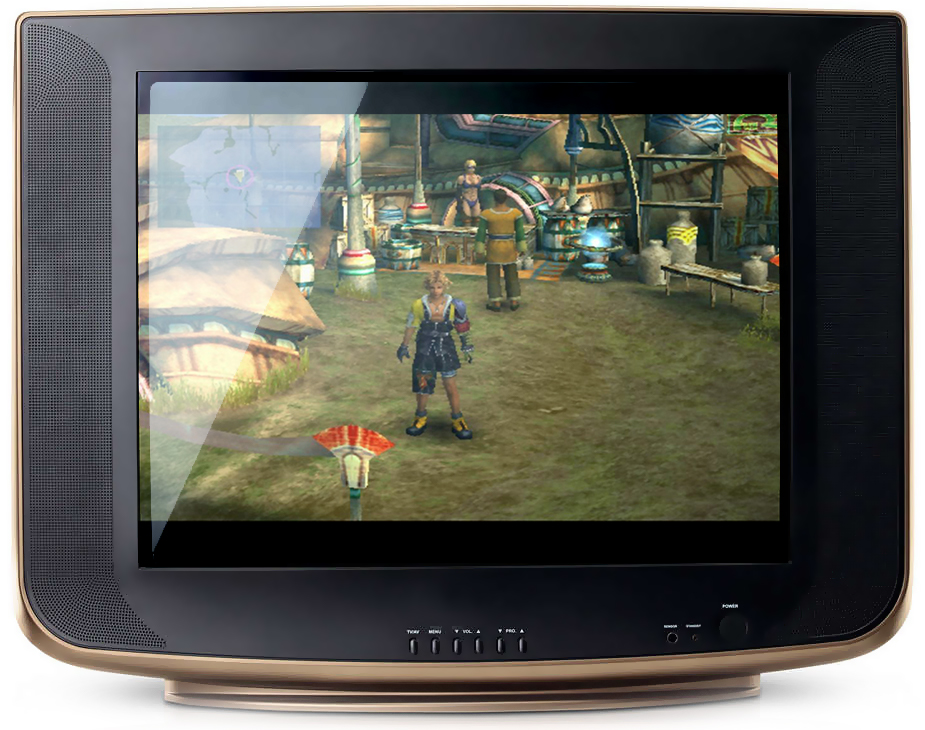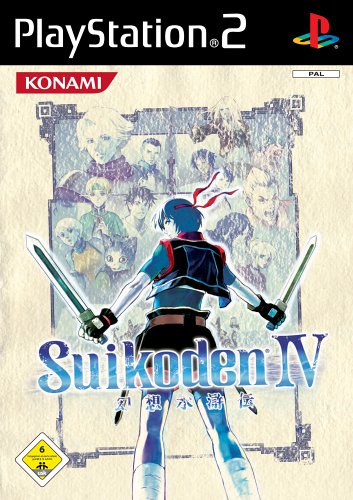
Written in 2020
Europe is a huge market for video games to be sold. But it was very difficult to bring the games over from the US or Japan in order to localize them; or at least it was harder than the localization in North America.
In the 2000s, two things existed that made localization so costly and complicated.
 Image recreated to display how Final Fantasy X would look on an european television.
Image recreated to display how Final Fantasy X would look on an european television.
First of all, Europe used a different TV standard than both USA and Japan did. As North America and Japan used NTSC, Europe used PAL on old televisions. The resolution of PAL was different (640 x 576 compared to 640 x 480) and the refresh rate of the TV as well (50 Hz compared to 60 Hz).
In order for publishers to have their games look correct in Europe, they had to expand the image and adapt their timing to the different refresh rate. But most didn't - the effort wasn't made especially since RPGs were only a niche genre and sales expectations were low.
What does this mean? The aspect ratio of PAL televisions was still 4:3, even with more lines that were available vertically. If you just use 480 of the 576 lines, that leaves out 176 unused lines if you put an image into that resolution - the result is a slightly squished image, which makes characters look disproportioned.
And the 50 Hz refresh rate caused videos recorded in 60 Hz to stutter - or, if not adapted correctly, run the game about 20% slower than originally intended by the developers.

The target market of video games in the early 2000s was the USA - so games that have been translated from Japanese were mostly translated in English and published in the states (and Canada as well, since most people there are perfectly able to speak English).
If a game should be ported over to Europe, there were two issues a publisher faced. They could either just use the English translation made for North America (like many did), or they could translate the game for all of the different languages present in Europe. And even if you only count languages with speakers exceeding 50 Million, you still had to translate into Spanish, French, Italian and German. Some companies went the extra mile and made the effort.
But then some publishers only superficially bothered with proper localization and failed miserably because their translation attempts were so cheap.